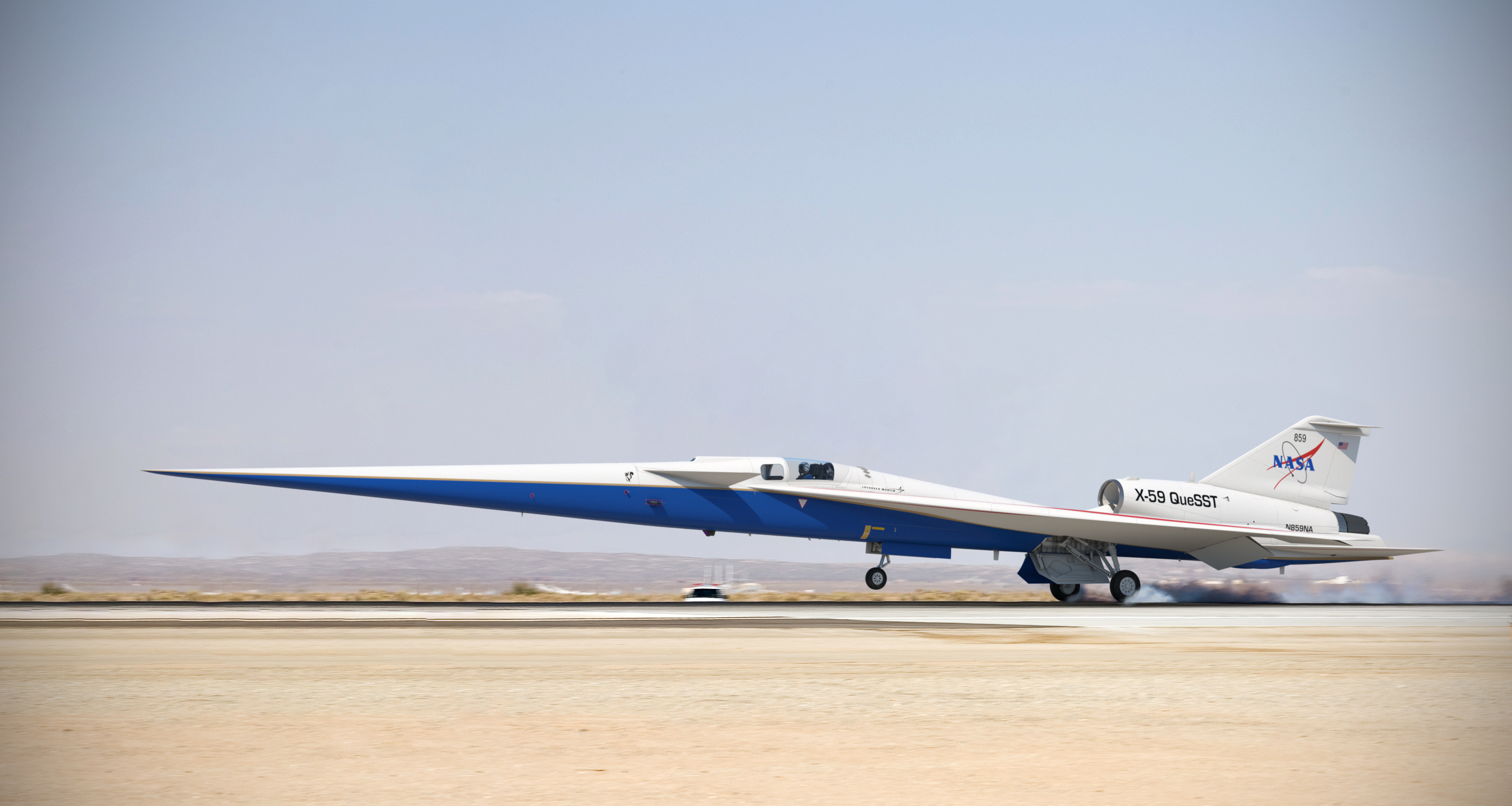NASA's experimental X-59 supersonic jet could be built by the end of 2020
It'll test ways to shush sonic booms.

NASA's new experimental supersonic X-plane is on a fast track to flying.
The plane, officially named X-59 QueSST in 2018 and often referred to as just X-59, was greenlit for final assembly during a critical design review in 2019. With this plane, NASA aims to create an ultraquiet craft that can travel over land faster than the speed of sound.
In 2020, Lockheed Martin, which NASA commissioned to build the plane, plans to mate the aircraft and completely finish the building process by the end of the year, a company representative told Space.com. "It's moving very fast on the shop floor in terms of manufacturing and production," the company said.
Related: Supersonic! The 10 Fastest Military Airplanes
This follows a year of serious progress as the plane's wings have been assembled at Lockheed Martin Skunk Works in Palmdale, California, and innovative systems for the craft continue to develop.
After the "mating of the aircraft and final assembly," the representative said, "we'll take the airframe to do some proof testing and get some other parts installed, do some test runs of the systems, and then roll it out."
Once the plane is all together, it will take its first flight in 2021, the representative added.
Breaking space news, the latest updates on rocket launches, skywatching events and more!
Shake shake shake, shake shake shakeShake your eXternal Vision System 🎶To revolutionize flight, @NASAaero created a forward-facing camera & display system for X-59 pilots. Vibration testing will validate the system's structural integrity so it can fly: https://t.co/sCfAqZPQJm pic.twitter.com/6MP8hjzbuNJanuary 27, 2020
Assembly of the X-59 continues @LockheedMartin Skunk Works! Seen here? The wing assembly is lifted by a crane and moved to another area of the manufacturing floor in preparation for wing skin installation. Learn more about our mission to quiet the boom →https://t.co/n7C0Batq9Q pic.twitter.com/oPulTEbpqEJanuary 17, 2020
But will a plane that travels at supersonic speeds, or faster than the speed of sound, really be quiet enough to avoid causing a major disturbance? According to the representative, the team behind the plane is confident that the craft will be ultrafast and ultraquiet.
"We're very confident. All kinds of modeling simulations and predictions align, so we believe, based on these models and simulations we've run, that it will achieve that low-boom sound once it reaches supersonic speeds."
🦅It's a bird... ✈️It's a plane... It's the Shock Sensing Probe! Wait, what?! 😮This instrument will be used to observe various characteristics of the X-59’s shockwaves and confirm whether they match models to reduce the sound of a sonic boom→https://t.co/r19SP4deOkJanuary 9, 2020
To ensure that this is the case and that the plane not only works correctly and reaches these incredible speeds, but also remains quiet enough to not be a public nuisance, additional testing will follow the completion of the plane in 2020.
As the Lockheed Martin representative explained, building the plane is really only Phase 1 of the entire project. With Phase 2, further testing, certifications and acoustic (or sound) validation will occur. After that, in the third phase, community-response testing will ensure that, with a low-boom (a quiet sonic boom) demonstration, will validate how people respond to the craft flying overhead.
According to a NASA statement, in the community response testing, the team will "fly the X-plane over select U.S. communities to gather data on human responses to the low-boom flights and deliver that dataset to U.S. and international regulators."
- Why a Fighter Jet Is Testing 'Quiet' Supersonic Booms Over Texas for NASA
- NASA Rocket Launch Tests Supersonic Parachute for Mars Rover Landings
- Countdown: The World's Fastest Vehicles
Follow Chelsea Gohd on Twitter @chelsea_gohd. Follow us on Twitter @Spacedotcom and on Facebook.

Join our Space Forums to keep talking space on the latest missions, night sky and more! And if you have a news tip, correction or comment, let us know at: community@space.com.

Chelsea “Foxanne” Gohd joined Space.com in 2018 and is now a Senior Writer, writing about everything from climate change to planetary science and human spaceflight in both articles and on-camera in videos. With a degree in Public Health and biological sciences, Chelsea has written and worked for institutions including the American Museum of Natural History, Scientific American, Discover Magazine Blog, Astronomy Magazine and Live Science. When not writing, editing or filming something space-y, Chelsea "Foxanne" Gohd is writing music and performing as Foxanne, even launching a song to space in 2021 with Inspiration4. You can follow her on Twitter @chelsea_gohd and @foxannemusic.
